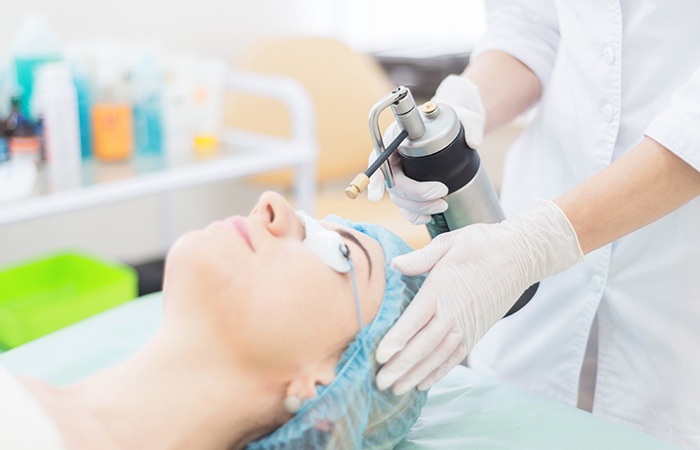Skin Treatments
Chemical Peels
Chemical peels remove damaged outer layers of skin to make skin smoother, reduce scarring and remove blemishes. Ranging from mild to strong, there are three types of chemical peels: alphahydroxy acid (AHA), trichloroacetic acid (TCA) and phenol. The strength of each peel is tailored to the patient. Peels can be combined with other procedures, such as facelifts, for additional improvement to skin. Chemical peels may be covered by insurance if they are performed for medical rather than cosmetic reasons.
Chemical peels are performed in a plastic surgeon’s or dermatologist’s office, or an outpatient surgical center. Anesthesia is not required because TCA and phenol have anesthetic properties, and AHA produces only a slight stinging.

Chemical Peel Procedure
During a TCA or phenol peel, the skin is cleansed and the solution is applied, which may cause a brief stinging sensation. Petroleum jelly or a waterproof adhesive tape may be put on the skin following a phenol peel. During an AHA peel, the skin is cleansed and the solution applied; there is no need for post-peel ointment or covering.
Side Effects of Chemical Peels
A phenol or TCA peel can result in tingling or throbbing, reddened skin, a crust or scab, and significant swelling that lasts, depending on the strength of the peel used, about a week. With a phenol peel, eyes may be swollen shut at first, and the patient may be put on a liquid diet and advised to keep talking to a minimum. Any tape used is removed after a day or two. AHA peels can cause temporary stinging, redness and irritation, as well as flaking or crusting. After a chemical peel, it is essential that the skin be protected from the sun.


Dermaplaning
Dermaplaning is a non-invasive manual exfoliation treatment that removes dead skin cells, dirt, oil and the fine vellus hair, or peach-fuzz, from the surface of the skin to reveal brighter, smoother skin.
This treatment exfoliates and removes the vellus hairs on the face that could get clogged by bacteria and oil. Dermaplaning allows makeup application to glide smoothly along with better absorption of products.
*Can also be done before skin resurfacing treatments to be more effective. European Facial included.
Microdermabrasion
Microdermabrasion is a minimally invasive skin-exfoliation procedure designed to treat sun damage, scars, wrinkles and hyperpigmentation. In addition to its cosmetic benefits, microdermabrasion helps to enhance circulation and lymph flow. Results are immediately visible, and there is no downtime for the patient, who can immediately resume regular activities. Performed in-office, microdermabrasion does not require anesthesia, and can be combined with other procedures such as chemical peels or laser treatment.
Microdermabrasion is a much less invasive procedure than dermabrasion, which is used to treat more serious skin problems. Dermabrasion, in which several layers of skin are removed, is considered a surgical treatment.


The Microdermabrasion Procedure
During the microdermabrasion procedure, which is usually performed by an aesthetician, a handheld device is used to transmit tiny crystals of aluminum oxide across the targeted treatment area. The crystals and dead skin are then suctioned away with a vacuum tool, revealing fresh underlying skin. A treatment session can last from five to 60 minutes. The results of a single microdermabrasion treatment are temporary. For continued improvement, treatment should be repeated every 2 to 4 weeks.
Risks of Microdermabrasion
Microdermabrasion is considered safe for all skin types, and is appropriate for Asian and dark-skinned patients who may be at risk for skin discoloration with other types of treatment. There are no serious risks associated with microdermabrasion, although some patients experience mild redness and irritation, and patients older than 70 may have a slightly escalated risk of bruising and skin abrasions. Avoiding sun exposure after microdermabrasion is important because it may have removed some of the skin’s natural protection.
In patients who have a history of cold sores, undergoing microdermabrasion may reactivate the virus that causes them. In those cases, avoiding treatment around the lip area and/or taking preventative antiviral medication prior to treatment may be recommended.
